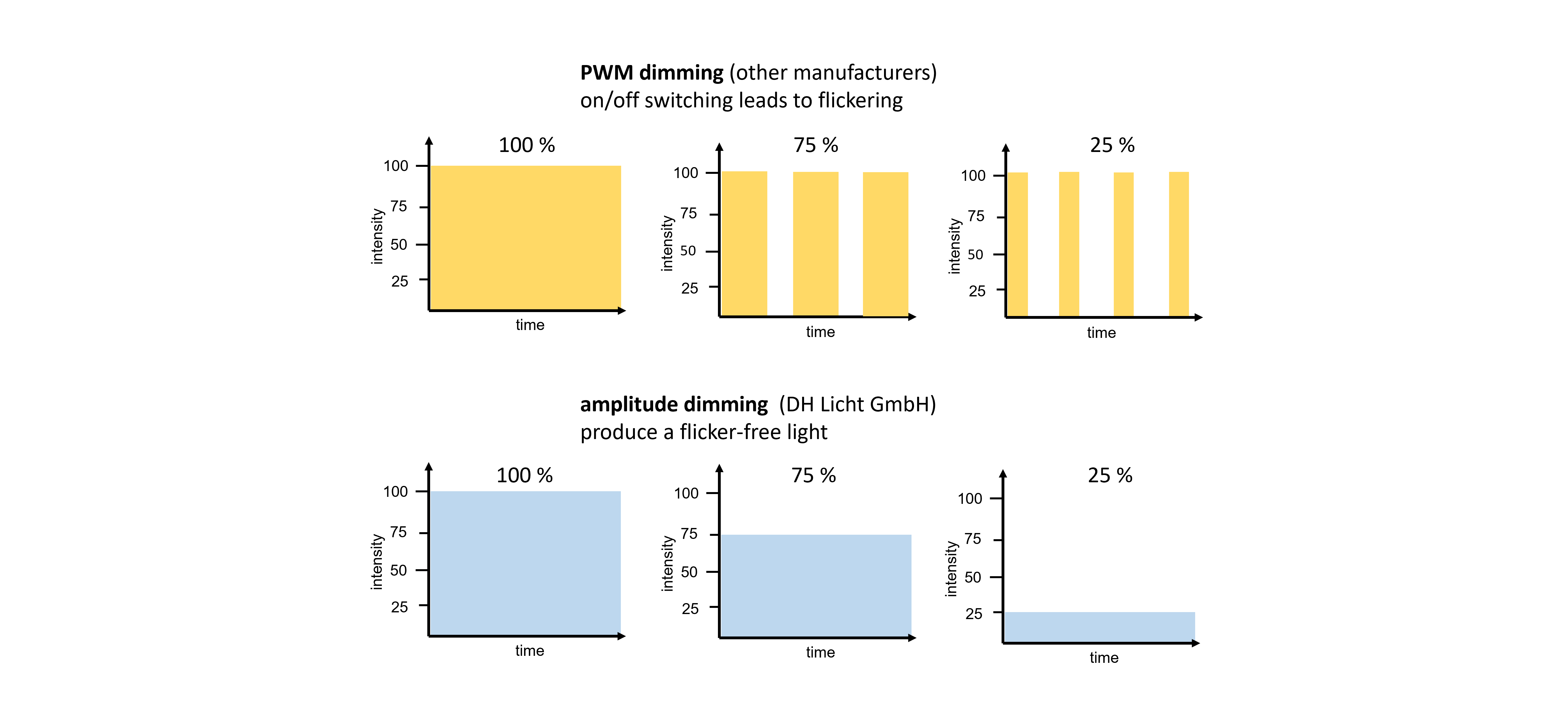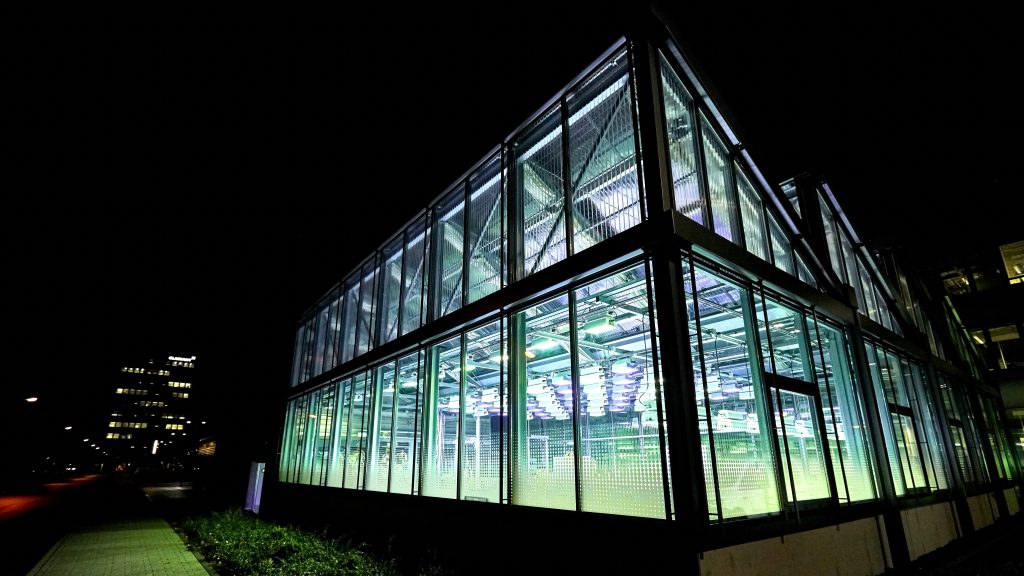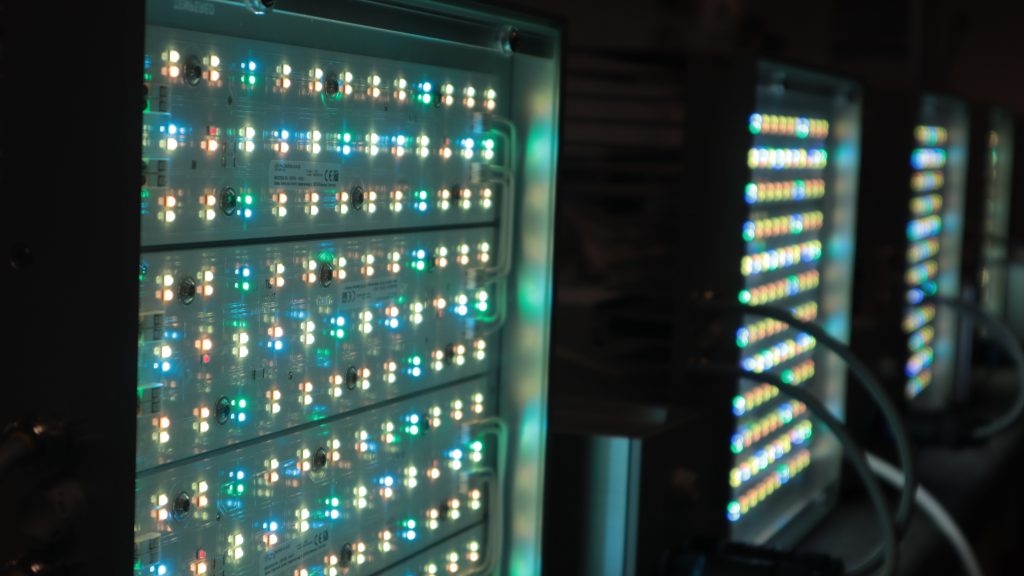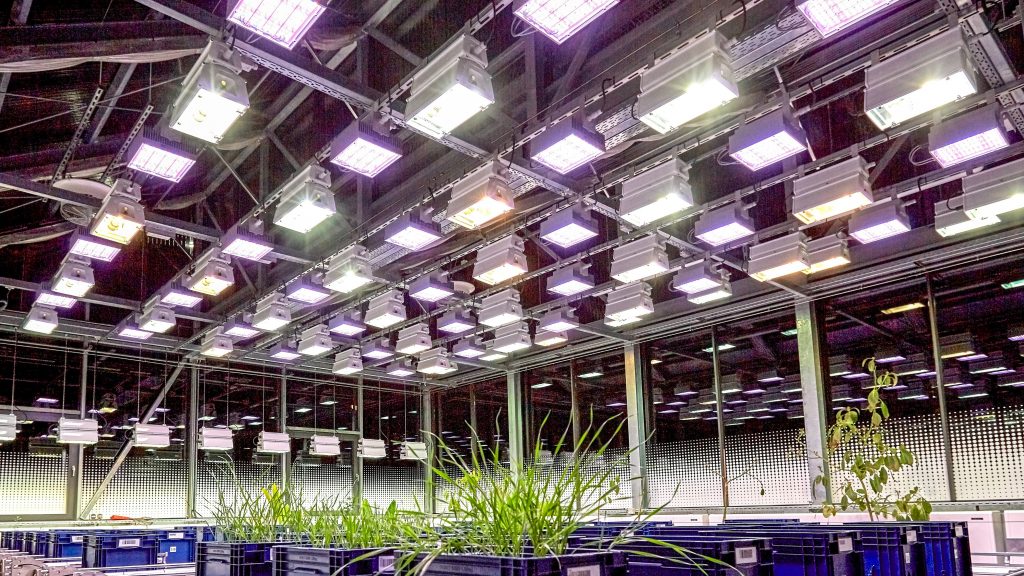insect-friendly light
amplitude vs. PWM dimming
Insect-friendly light from DH Licht
The orientation of insects not only depends on the light color and light intensity of the ambient light, but also on its frequency. Humans perceive movements smoothly from about 60 Hz. Insects have a much more sensitive perception of light. Bumblebees and bees used for pollination can detect flickering with a frequency up to 240 Hz.
Conventional LED systems emit light with only 100 Hz and can thus significantly disrupt the orientation behavior of pollinating insects or beneficial insects that are used as biological crop protection.
In particular, the dimming technology used in LED luminaires is decisive with which frequency the light is emitted. With the very common and inexpensive PWM dimming (pulse width modulation), the light intensity is influenced by “on/off” switching. The longer or more frequent the “off” phases are, the lower the light intensity (see graphic below) . In the case of very low light intensities, “flickering” is produced in this way.
Through the use of special electronic components, LED-luminaires from DH Licht produce a flicker-free light by amplitude dimming. The insects no longer register the light as flickering and can therefore orientate themselves undisturbed.




